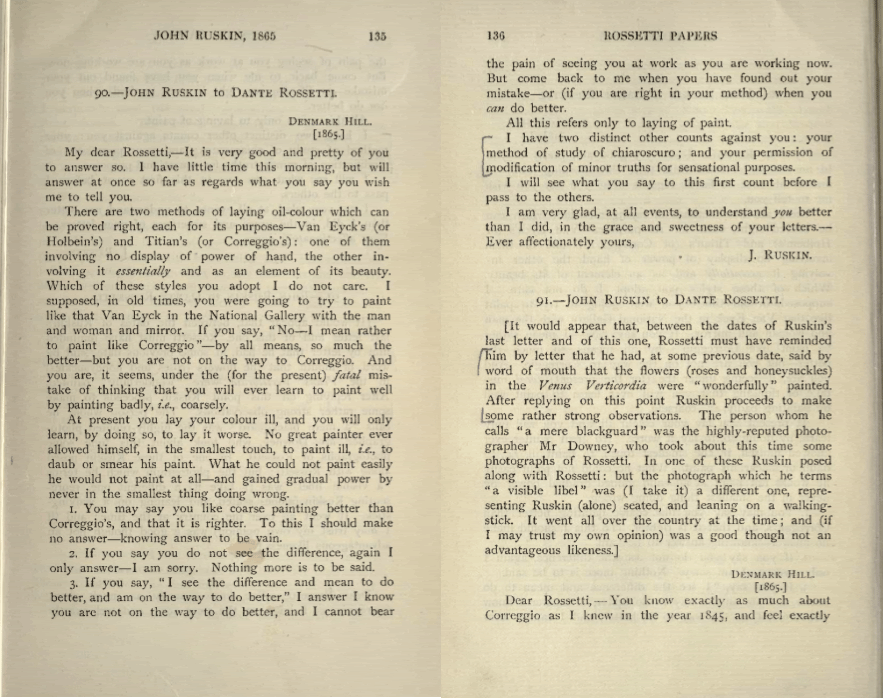The Goddess of Love and Beauty: Dante Rossetti's Venus
Amanda Stancati and Eva Ho
1354
Public Reaction: Rossetti vs. Ruskin
It has already been discussed that Rossetti's new sensuous approach to his artwork was not welcomed by everyone. In fact, many people viewed the display of sexuality as coarse and offensive because it did not fit in with the conventions of beauty at the time. So when Venus Verticordia was unveiled - showing a semi-nude woman - there was much criticism. The general feedback was negative and the painting offended some because it did not fit in with the social conventions of the time. Rossetti's decision to endow Venus with sexual empowerment was not palatable with the conservative Victorian public.
|
Venus Verticordia was not one of Rossetti's most significant pieces, but it was particularly infamous for being the cause behind the end of Rosetti and Ruskin's friendship. John Ruskin was an art enthusiast, renowned critic and one of Rossetti's closest friends.@Helen Rossetti Angeli. Dante Gabriel Rossetti His Friends and Enemies. (London: Hamish Hamilton Ltd., 1949) The two have a patron-artist relationship and Ruskin often bought paintings from him. Rossetti agreed that they were both on par in terms of intellect but felt that Ruskin did not have an infallible perspective of art like he did. Already experiencing mixed emotions about Rossetti's new style of artwork, the appearance of Venus Verticordia pushed Ruskin to his limits until he was no longer able to hide his disgust. In a series of letters addressed to Rossetti, Ruskin attacks the way in which he handles the oil paints and how coarse the overall tone is.@William Michael Rossetti. Rossetti Papers, 1862-1870.London: General Books LLC, 2009. While Rossetti's paintings did not resonate with the general masses, there were a few select groups who accepted his mode of aesthetics.@"Pre-Raphaelite Challenges to Victorian Canons of Beauty". pp. 31 It was acknowledged earlier that The PRB had an avant-garde feel to their work because they went against the norm to envision new methods that were ahead of their time. As a result, Rossetti's productions became popular within groups of advanced artists and later set the founding basis of the Modernist art movement.
|
Venus is the symbolic figure of love and beauty; however beauty is subjective. The nineteenth century was a visually-driven culture and had a strict code of beauty concepts that ended up segregating social classes. The Pre-Raphaelite Brotherhood opposed these beliefs by creating their own definition of beauty. Rossetti demonstrates that he is not afraid to challenge the Victorian standards of beauty by painting sensuous and suggestive elements to his pieces. Through works like Venus Verticordia, this exhibit becomes a critique of what is considered to be the true meaning of beauty. To illustrate his beliefs, he draws influences from mythical and biblical tales in order to give substance to his heroines. It is very interesting to note how Rossetti's sophisticated vision of beauty fits the description of today's modern woman - confident and independent. Ultimately, Rossetti accentuates the importance of not submitting oneself to superficial norms, but to celebrate individualism in order to fully accept the real aestheticism movement.


